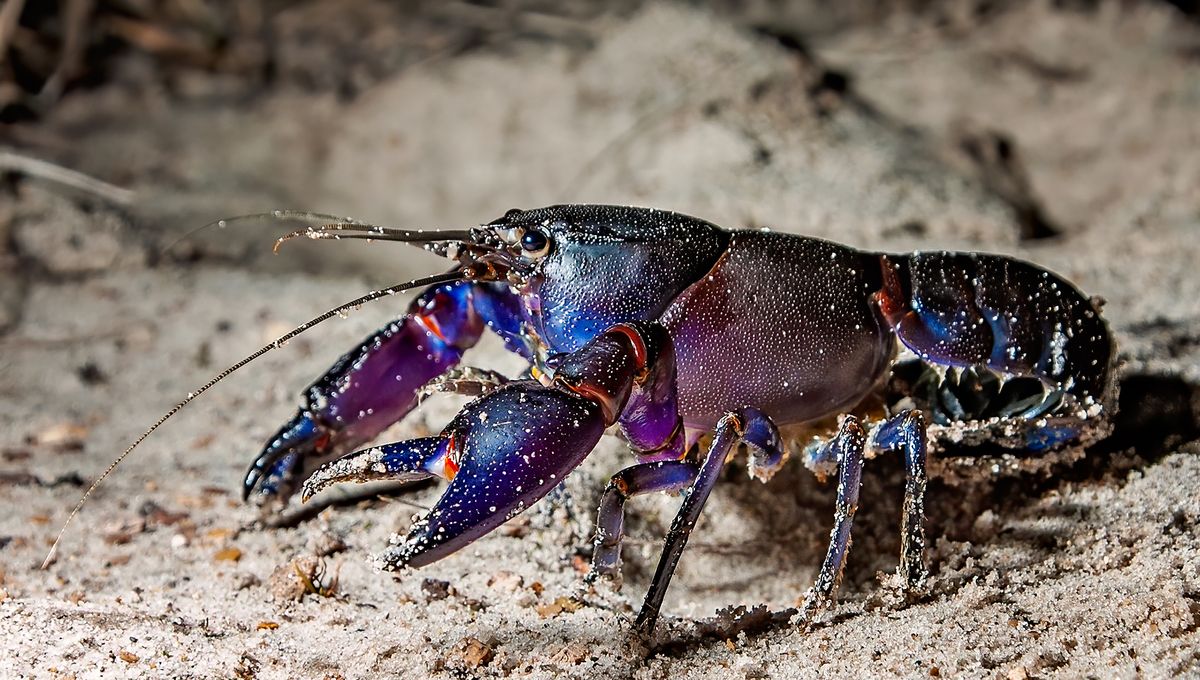
Lucky for us, the world is a dazzling display of colors. With so many animals relying on vision to perceive their environment, colors and patterns are a language used within and across species. But what about animals that hide underground, away from view? Why would they need a rainbow of colorful coverings?
Evolutionary biologists, fascinated by these displays as much as the rest of us, have found theoretical and empirical explanations for the evolution of these traits. All colors started out as happy accidents. Chance mutations in the genes of individuals gave them unexpected advantages, allowing them to survive, reproduce, and pass on those mutations.
The coats of some animals use “cryptic” colors that allow them to blend into their environment. Think tan-colored gazelles in the savannah, as well as dazzling mimetic chameleons. Being less visible to predators enhances chances of survival and of passing on their color.
Other species don “conspicuous” colors that stand out from their background. Bright colors can be favored during sexual selection, or be alarming to potential predators, leading in both cases to the perseverance of these traits.
There are 700 species of crayfish, the freshwater cousin of the lobster. While many of them evade predatory eyes with “cryptic” colors, a whooping 400 species are coated in blue, red, orange, or purple. The catch is that these brightly colored crustaceans predominantly live in muddy burrows and only come out at night.
This led Zackary A. Graham and colleague Dylan J. Padilla Perez to wonder: why be so colorful if no-one will see it? There seemed to be no evolutionary advantage for this phenomenon: could this be an evolutionarily neutral trait? This brings us to one of science’s trickiest problems: proving the lack of evolutionary pressure for colorful carapaces.
“Not every single trait that exists is adaptive,” Graham told Science. “If we were perfectly adapted to our environment, we would never get infected, we would never get diseases, we would never die. But that’s not the way that evolution works.”
Armed with a phylogenetic tree and pictures of crayfish dutifully color-labeled by a group of Crayfish Biology students, they discovered that conspicuous colors had emerged more than 50 times. The evolution of these traits was also correlated with the evolution of burrowing behaviors.
An opposite hypothesis could emerge: the tan coloration of some open-water crayfish came about under evolutionary pressure to be more “cryptic”, and blend in with the environment. They found that no conspicuously colored crayfish maintained their colors when evolving aquatic behaviors.
Mutations that lead to conspicuous coloration in crayfish may be quite frequent. If no evolutionary pressure will stop them, these happy accidents will propagate through the population, coloring the crayfish for our eyes only.
The study is published in Proceedings of the Royal Society B: Biological Sciences.
Source Link: These Vibrant Crayfish Live In Burrows Underground – So Why Such Bright Colors?